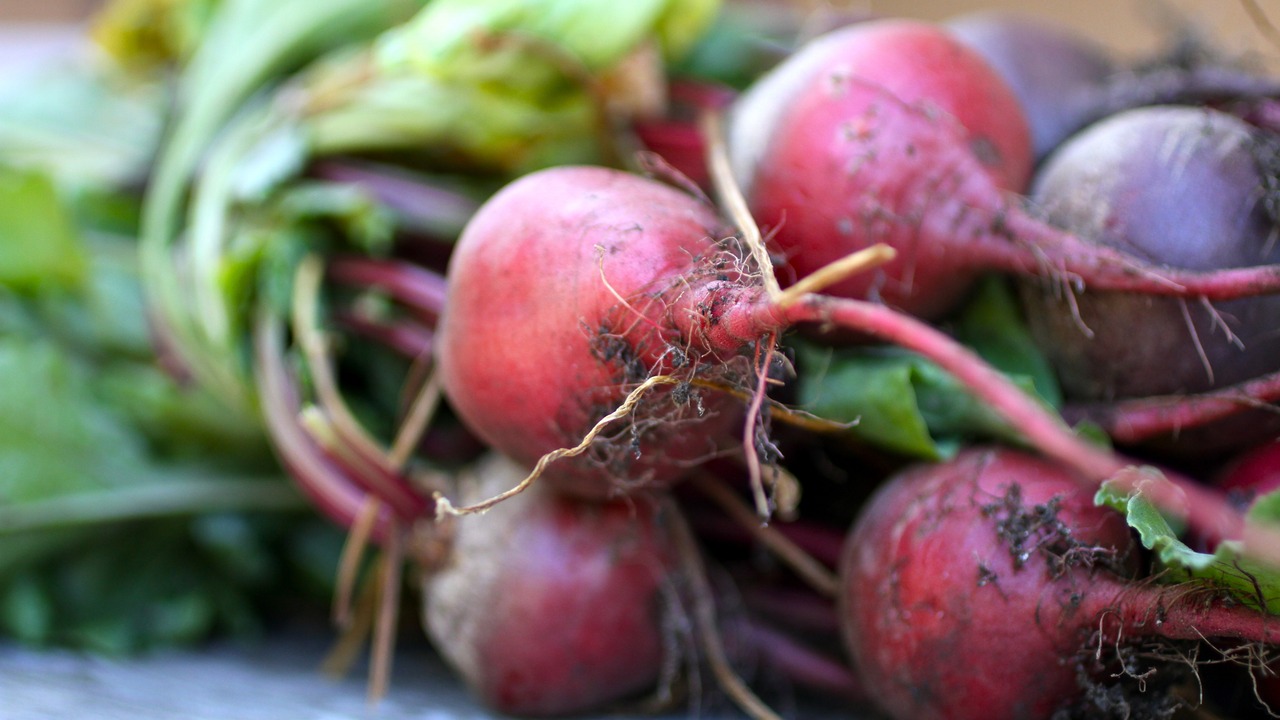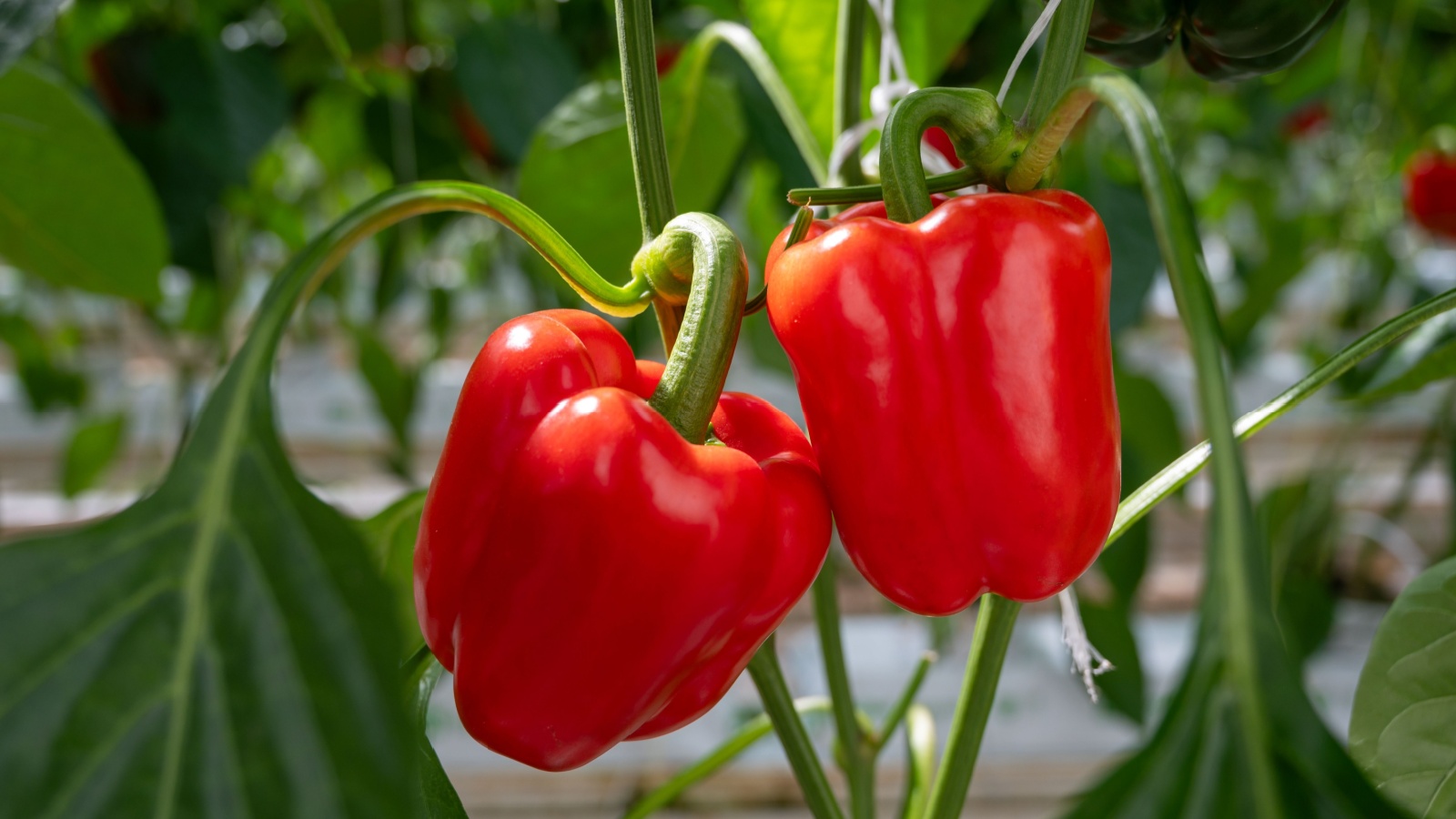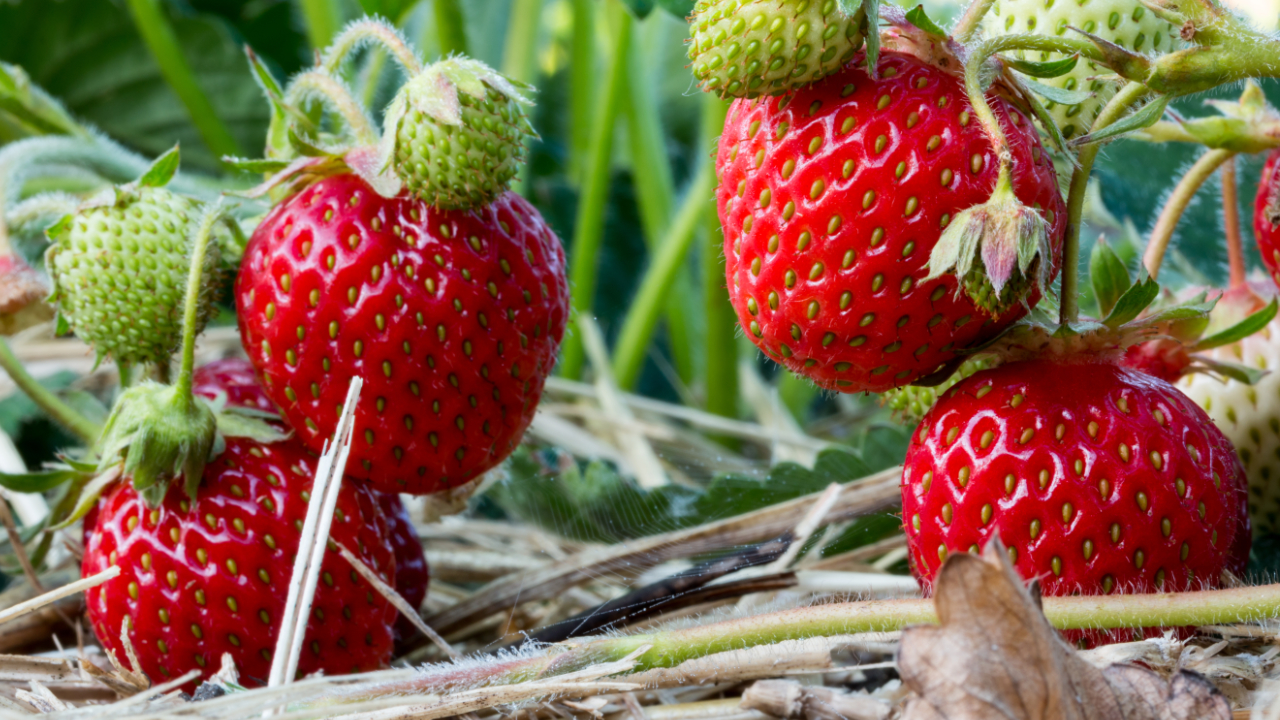I have discovered that garlic is a wonderfully easy and enormously satisfying crop to grow. After planting and mulching my softneck garlic cloves in early November, I mostly ignore that section of the garden until the summer harvest time. And then the fun begins: loosening the soil with a digging fork, giving each stalk a gentle tug, and seeing what has grown!
Before we delve into companion plants for garlic, it’s important to note that because garlic is a heavy feeder and a root crop, it may be best grown by itself to avoid nutrient competition and root disturbance. But I am a big fan of intercropping, and garlic provides some wonderful pest control for other vegetables.
To avoid any problems, just make sure to enrich your soil with plenty of compost, especially where you plant the garlic cloves, and leave enough space to dig up the mature garlic bulbs without disturbing the roots of other nearby plants.
1. Beets

Image Credit: The Farmstrs/CC BY-SA 2.0.
While most of garlic’s companionable qualities revolve around pest control, when it comes to beets, garlic can actually help improve their growth and even their flavor. Keep in mind when planting that both of these root crops will need to be dug up, likely at different times. But if you plan it right, you might be able to harvest the garlic and beets all at once.
2. Cabbage

Image Credit: Deposit Photos.
Garlic helps deter pests like cabbage worms and diamondback moths from cabbage and other brassicas (such as broccoli, cauliflower, kohlrabi, Brussels sprouts, collards, and kale). As with beets, garlic can also improve the growth and flavor of members of the cabbage family.
3. Celery

Image Credit: Deposit Photos.
Celery can be a bit of a tricky vegetable to grow, but garlic might help make it easier. If your celery struggles due to munching aphids, try growing it near garlic. Garlic has been known to repel aphids with its pungent aroma. Even though many people find the smell of garlic to be pleasing to the point of mouthwatering, many garden pests don’t like it at all.
4. Lettuce

Image Credit: Shutterstock.
If aphids thwart your attempts at growing your own lettuce for fresh salads, too, consider planting lettuce along the edges of your garlic bed to deter the pesky insects. Since lettuce is a cool-season crop and garlic is harvested in summer, spring lettuce will be finished before it comes time to dig up the garlic.
5. Oats

Image Credit: H. Zell/CC BY-SA 3.0.
Oats are the one plant on this list that benefit garlic, rather than the other way around. Plant oats in with garlic to serve as an interplanted cover crop. When the weather turns freezing, the ankle-high oats will die and collapse, forming a rich mulch that suppresses weeds, locks in moisture, and prevents soil erosion.
6. Peppers

Image Credit: Shutterstock.
Garlic helps protect young pepper plants from insect pests and is harvested before the pepper plants grow large and require more space. In addition, a study performed by researchers in China found that intercropping garlic and peppers also has beneficial effects on the soil, improving soil microbial and biochemical properties.
7. Spinach

Image Credit: Deposit Photos.
Spinach and garlic have a mutual relationship in the vegetable garden. Garlic, of course, deters many pests that might otherwise chow down on your leafy greens. And when spinach is planted among garlic plants in the spring, it serves as a living mulch. By the time the garlic is ready for harvesting, the spinach has bolted in the heat of summer.
8. Strawberries

Image Credit: Dietmar Rabich / Wikimedia Commons / “Dülmen, Kirchspiel, Erdbeerfeld — 2015 — 6509” / CC BY-SA 4.0/Wiki Commons.
Because strawberries are a perennial, interplanting garlic with them can be tricky. However, garlic helps reduce strawberry spider mite populations, making intercropping worthwhile. Depending on how your strawberries are planted, you might plant a row or two of garlic along the edges of the strawberries or stick patches of garlic at the ends of rows. If you haven’t planted strawberries yet, consider planning spaces to include garlic.
Worst Companion Plants for Garlic: Beans and Peas

Image Credit: Shutterstock.
Garlic grows well alongside many types of plants in the vegetable garden, provided space and nutrient needs are considered. However, garlic and other alliums (onions, shallots, etc.) have been known to stunt the growth of legumes, including bush and pole beans and peas.
If you don’t already grow garlic, you’ll want to add it to your vegetable garden to help deter many kinds of pests and improve the growth and flavor of some of your other crops. Just remember to provide plenty of compost and space for harvesting.



7 Best Companion Plants For Beets (And 4 To Avoid)
Thursday 10th of November 2022
[…] Here are the best companion plants for garlic. […]
Companion Planting Guide (Including 7 Benefits Of Polyculture)
Thursday 10th of November 2022
[…] Companion plants for garlic […]